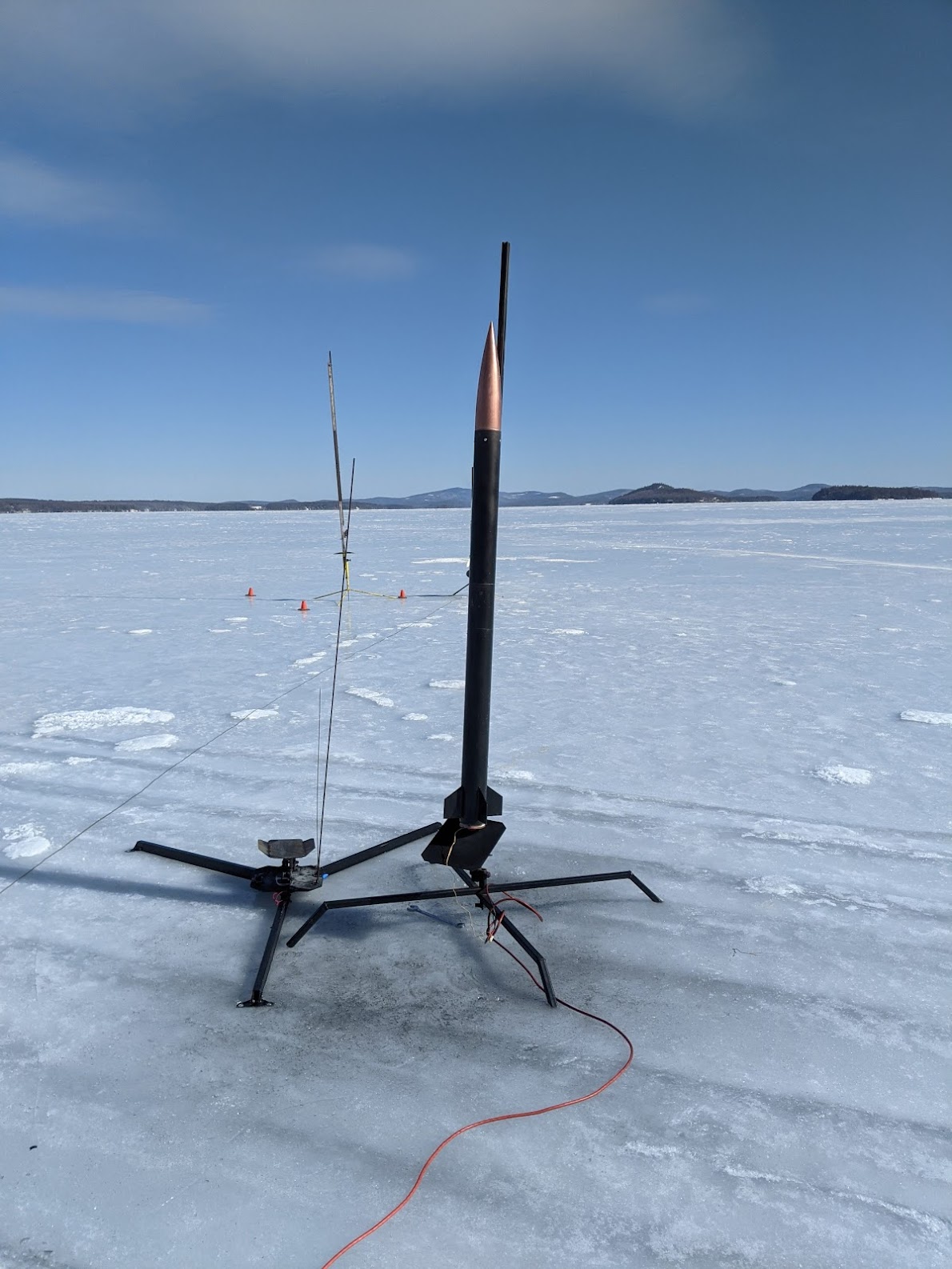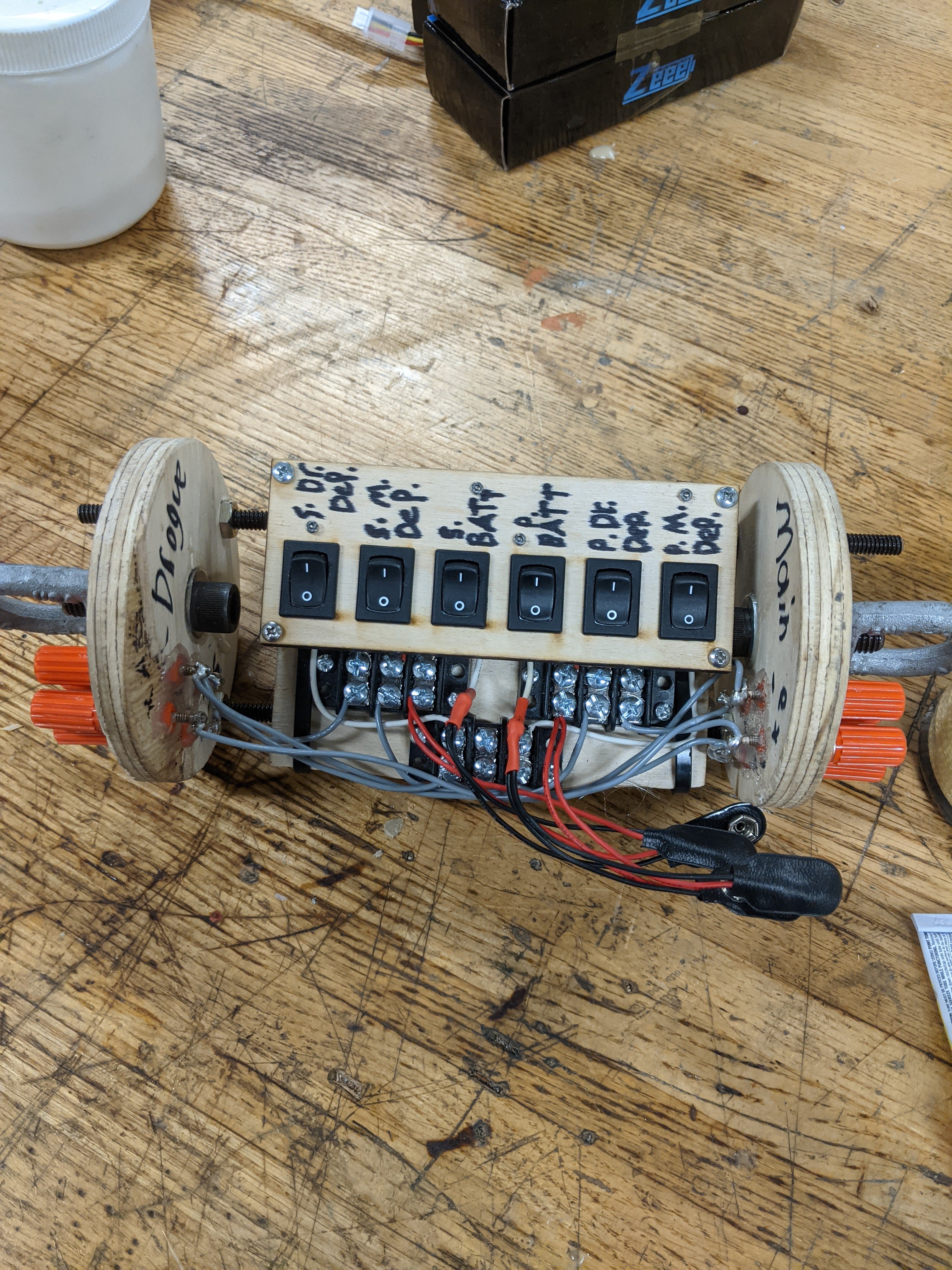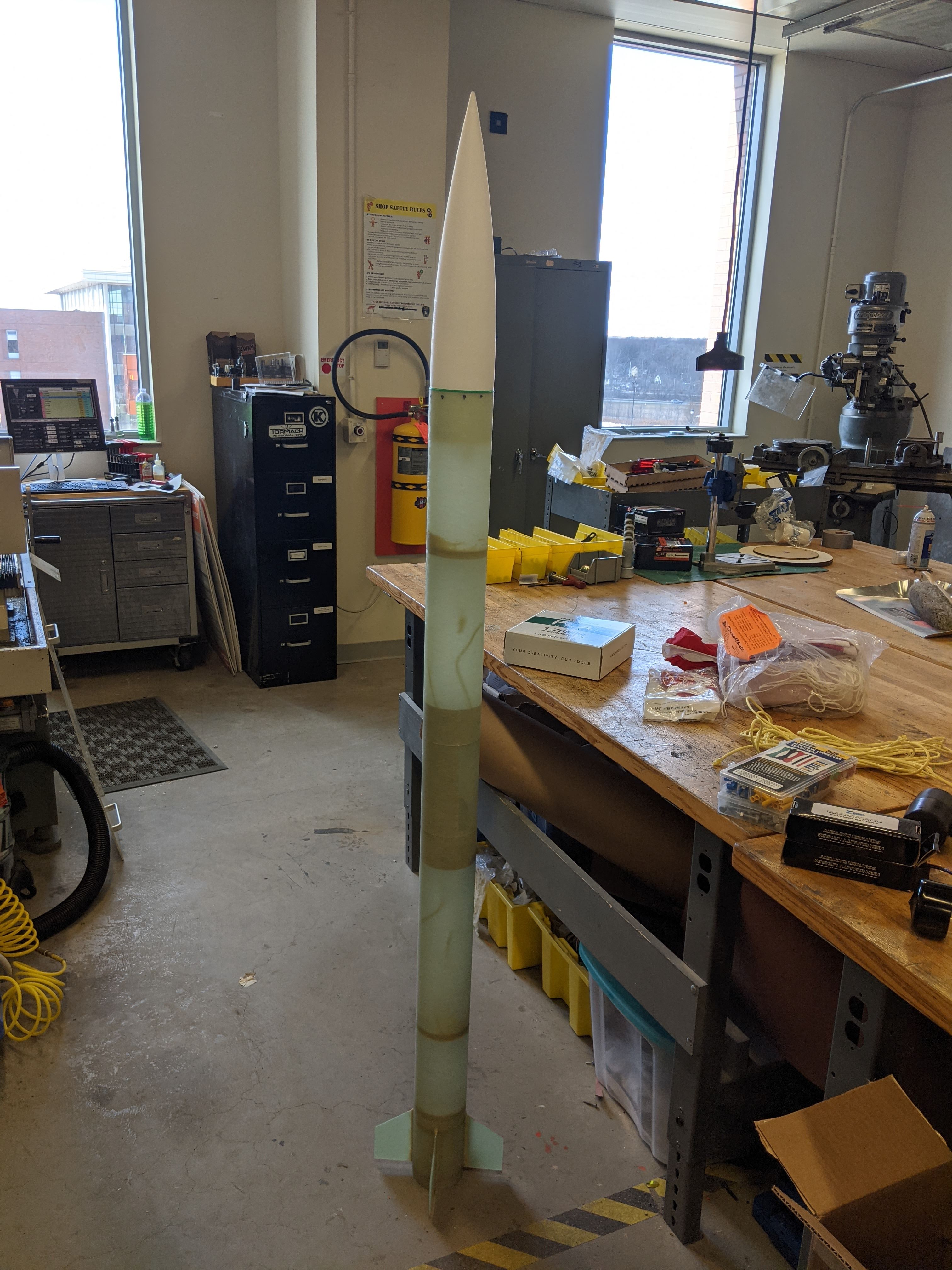Projects
Mayflower

Overview
Mayflower is my L2 certification rocket. It is a scratch build, L2 class rocket, with a primarily fiberglass airframe, dual redundant avionics systems, and dual bay deployment.
it was designed to go together easy, with primarily Commercial Off The Shelf (COTS) components, with minimal modifications necessary. It also uses a relatively low power motor, so that the rocket would go up and come down fast, rather than coast up unnecessarily and waste time. For certification rockets, all that really matters is that it comes down ok, so I was fine with this rocket not being the highest or fastest flying rocket ever.

Specifications
-
Stability: 2.5
-
Predicted Apogee: 1958 ft
-
Actual Apogee: 1519 ft (discrepancy largely due to excessive winds at launch site)
-
Height: 6' 5.625"
-
Motor: J430
-
Max Velocity: Mach 0.32 (353 ft/s)
-
Airframe Diameter: 4"

Avionics
The Avionics used were two Eggtimer Quark flight computers, in a dual redundant configuration. This meant that each quark had it's own power source, and its own set of Drogue and Main ejection charges. I calculated the charges so that the primary charges would pressurize their respective bay to 10 PSI, and the secondary charges would bring the bays to 15 PSI. My thinking was if 10 PSI wouldn't separate the bay, or if the primary didn't blow, 15 PSI definitely would do it.
One of the rules for our launch site is that the rocket's avionics need to be powered off until it's on the pad. I accomplished this with a series of shut off switches that could arm/disarm various parts of the avionics system. While the amount of switches I put in was probably unnecessary, I really wanted the moment of flipping all the switches all at once, cause it seemed cool.
Power came from two sets of parallel 9V batteries, each pair wired to a shutoff switch which connected it to the flight computer.

Flight
Mayflower flew off of the frozen surface of Lake Winnipesaukee on March 6th, 2021. She flew to a height of 1519 feet, both the drogue and main deployed successfully, and the rocket came down slow enough that it wasn't damaged on impact, earning me my L2 certification. Flight footage can be seen below: